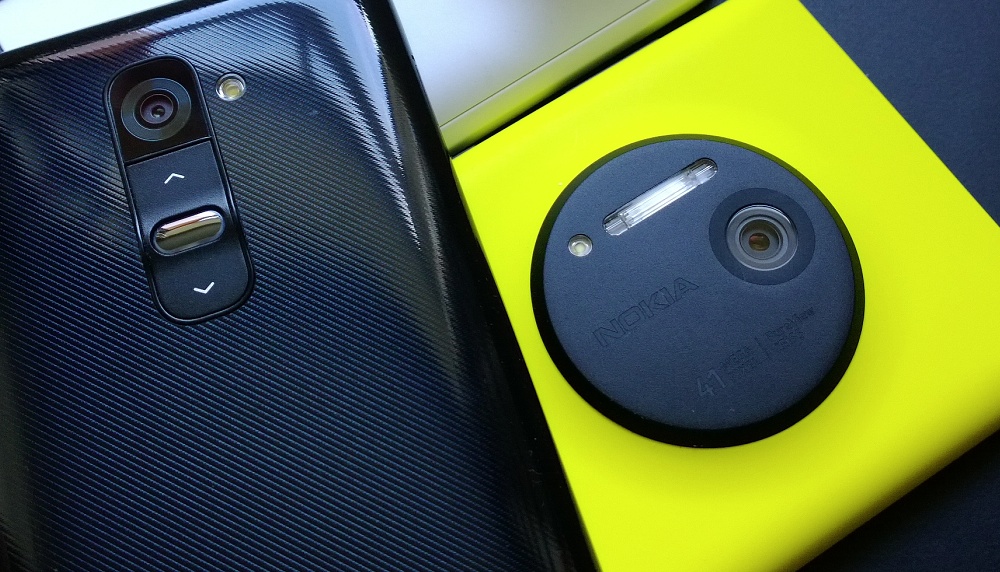Smartphone industry watchers will have noted that there was one other phone with OIS - the HTC One, though this only had 2-axis compensation (pitch and yaw - no roll) and only one lens element was being moved, whereas in the Nokia Lumia implementation the entire optical stack is moved around in a 'barrel shift' configuration (in the Lumia 1020, supported by a ring of tiny ball bearings, no less!) It's not clear how much of the LG G2's optics are being moved - I'd guess that it's the whole stack, and with full 3-axis compensation, as in the Lumias, judging from the results I saw (and you can see for yourself in the video below).
Of course, there's far more to video capture than stabilisation. A lot also depends on the quality of the optics, the size of the sensor (in terms of processing more light) and the quality of the MP4 encoding software. Plus, in the case of the Lumia 1020, there's the still magical way in which the 41 megapixel underlying sensor allows genuinely lossless 4x digital zoom. The G2, as with most modern smartphones, allows digital zoom, and should in theory be capable of around 2x magnification without exceeding the resolution of its sensor, but from the results below I'm not convinced that LG's software or camera electronics is optimised for this.

Away from obvious zooming limitations, the LG G2's video output did seem slightly muted and washed out - it's possible that this was simply relative to the Lumia's rather saturated video, but most viewers would take the more colourful, more cheery Lumia output every time, I suspect.
As usual with embedded 1080p videos, you'll want to maximise the playback window here and also the playback quality:
The zoom functions of Nokia's PureView system on the Lumia 1020 do stand out in this test comparison - simply astonishing possibilities for a phone that's so relatively slim and with no obvious moving optical parts (as on the Samsung Galaxy S4 Zoom) and with almost no loss in fidelity.
When zoomed in, the G2's output is significantly degraded, more so than I'd have perhaps have expected, but credit must be given to LG's OIS implementation - the actual framing in the G2 video is just as stable as Nokia's.
I've switched between audio from the two smartphones several times in the video above and it's fair to say that, stereo differences aside, both have high quality microphones for general use. I didn't test in a high volume environment, but Mark Peters did here, and it doesn't seem as if the LG's mikes are of anywhere near the same ultimate (HAAC) quality as Nokia's. By the way, don't draw any conclusions from the stereo differences above - I had both phones strapped into a special jig and there must have been significant obstruction of the audio path to the relevant microphones.
Finally, the last clip shows up well the relative low light performance, with the software in the G2 desperately trying to compensate for the small sensor in the G2 by using maximum ISO on the sensor and by decreasing the video frame rate (effectively allowing in more light per frame). In fact, it overdoes this, with the results you can see above, with bright spots blown out. LG needs to tweak its video parameter algorithms here, I think.
I already showed just how far the Nokia Lumia 1020 is from the rest of the smartphone class of 2013 in terms of still imaging. Although the gap isn't quite as wide in terms of video capture, it is most definitely there, with Nokia's superbly crisp video picture and 4x lossless zoom the standouts for me.
Add the two halves of smartphone imaging together and the Lumia 1020 sails away with the honours. I realise that the DxOMark people disagreed about video capture, but then I suspect they were doing controlled lab tests rather than heading out into the real world - and I beg to differ with their results. Maybe you'd like to comment after watching the side by side video compilation above?
